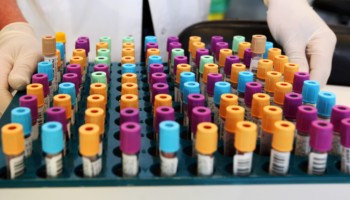Psychedelics have been under investigation by academics, clinicians and pharmaceutical companies for some time and the momentum and interest in this area show no sign of slowing down. In this article we take a look at the latest initiative in the US and the current state of play in a number of other countries, including the UK.
Background
Psychedelics are defined as “drugs which cause effects on the mind, such as feelings of deep understanding, or unusually strong experiences of colour, sound, taste and touch”[1], or alternately, “a subclass of hallucinogenic drugs whose primary effect is to trigger non-ordinary mental states and/or an apparent expansion of consciousness”.[2]
As of 1 July 2023, Australia’s decision to legalise MDMA[3] and psilocybin (the active compounds in ecstasy and magic mushrooms respectively) for the treatment of PTSD and treatment-resistant depression has come into effect[4], meaning that these treatments can now be prescribed by physicians.
In the EU, a number of clinical trials for psilocybin, MDMA and LSD are either ongoing or have taken place. Regulatory progress has been a little slower than Australia, with no approvals given to date, although the EMA – the EU’s medical regulator – is alive to the promise of this area of research and is closely following developments.[5]
The UK is also making progress, with similar trials for MDMA, psilocybin, DMT and other compounds having taken place – although as in the EU, no regulatory approval has been given yet. Most recently, the MHRA (the UK’s regulator) has approved a trial to investigate MSP-1014, a novel compound that is closely related to psilocybin for the treatment of depression.[6]
The US appears to be some way ahead of the UK and the EU. The Biden administration has confirmed that it anticipates regulators will approve MDMA and psilocybin as therapies sometime in 2024.[7]
With MDMA and psilocybin seemingly well on the way to gaining regulatory approval in many key jurisdictions, researchers and companies will no doubt be looking to develop improved or even entirely different psychedelic therapeutic compounds. Perhaps with this in mind, the FDA has now released draft guidance[8] that outlines some of the challenges associated with psychedelic drug development programs and aims to help researchers design studies whose results will be capable of supporting future drug applications – or should at the very least codify the approach that researchers have already been taking to date.
Here are a few of the key topics for psychedelic drug development programs addressed by the guidance.
1. Chemistry, manufacturing and controls (CMC)
CMC includes manufacturing of bulk drug substance and final drug product, setting specifications, release criteria, stability programs, and analytical methods. Among other points, the guidance notes:
- An investigational psychedelic product may be classified as a “botanical” if derived from plant or certain other natural materials, although highly purified substances from such sources will not be. Clearly, this may have relevance for compounds such as psilocybin (obtained naturally from fungi) and may present a separate route to obtain regulatory approval, although not without its own challenges.
2. Nonclinical
Nonclinical studies are typically carried out before a compound is used to treat humans. Here the guidance suggests:
- Most of the conditions being studied in the context of psychedelics to date are chronic. Nonclinical studies to support chronic dosing should be provided if the treatment effect is not durable and repeat dosing is expected.
- It is important to carry out a thorough evaluation of binding to serotonin receptor subtypes – many psychedelics have this property and it has been associated with heart valvulopathy in humans.
- For certain psychedelics, it may be reasonable for clinical studies to begin without first carrying out non-clinical animal toxicology testing, as long as extensive human data are available from previous clinical studies and no serious safety concerns arose.
3. Clinical pharmacology
These studies look at the action and behaviour of drugs in humans. Here the guidance notes:
- The need to characterise the dose-response relationship for efficacy and safety, which is often poorly understood for psychedelic drugs.
- The importance of taking account of known pharmacodynamic interactions (e.g. substances that increase serotonin activity, such as MDMA, are likely to interact with drugs such as Selective Serotonin Reuptake Inhibitors (SSRIs).
4. Abuse potential assessment
Most psychedelics are controlled substances regarded by regulators to have high abuse potential. The guidance notes that these drugs need to be evaluated for abuse potential during development and new drug applications should contain relevant data and proposals in relation to drug scheduling under the Controlled Substances Act.
5. Clinical
Clinical studies evaluate the effect of a compound on particular health outcomes. Here, the guidance points out the following:
- Study design is critical. Subjects receiving a psychedelic (i.e. not a placebo) are functionally unblinded due to the readily apparent psychedelic effects of the drug. Conversely, those who receive a placebo and experience no such psychedelic effects may realise they have not been given the drug – these subjects may therefore experience an unwanted nocebo It will be important to consider these effects and the guidance suggests that rather than use an insert placebo, alternatives, such as subperceptual doses of a psychedelic drug, or other psychoactive drugs that mimic some aspects of the psychedelic experience, may be better.
- Psychedelics are often administered in conjunction with psychotherapy. This introduces an additional variable that complicates the assessment of effectiveness and presents a challenge for any future product labelling. Sponsors should also consider how they will address expectancy and performance biases arising from psychotherapeutic components.
The FDA has invited comments on its draft guidance by 25 August 2023. Stay tuned for further news.
[1] Cambridge Dictionary
[2] Wikipedia
[3] A “non-classic” psychedelic that is more correctly described as an entactogen or empathogen.
[4] Notice of final decisions to amend (or not amend) the current Poisons Standard in relation to psilocybine and MDMA (tga.gov.au)
[5] Reply to MEPs letter on psychedelic-assisted therapies (europa.eu)
[6] UK trial to test psilocin-based drug for major depressive disorder (europeanpharmaceuticalreview.com)
[7] Biden Administration Plans for Legal Psychedelic Therapies Within Two Years (theintercept.com)



